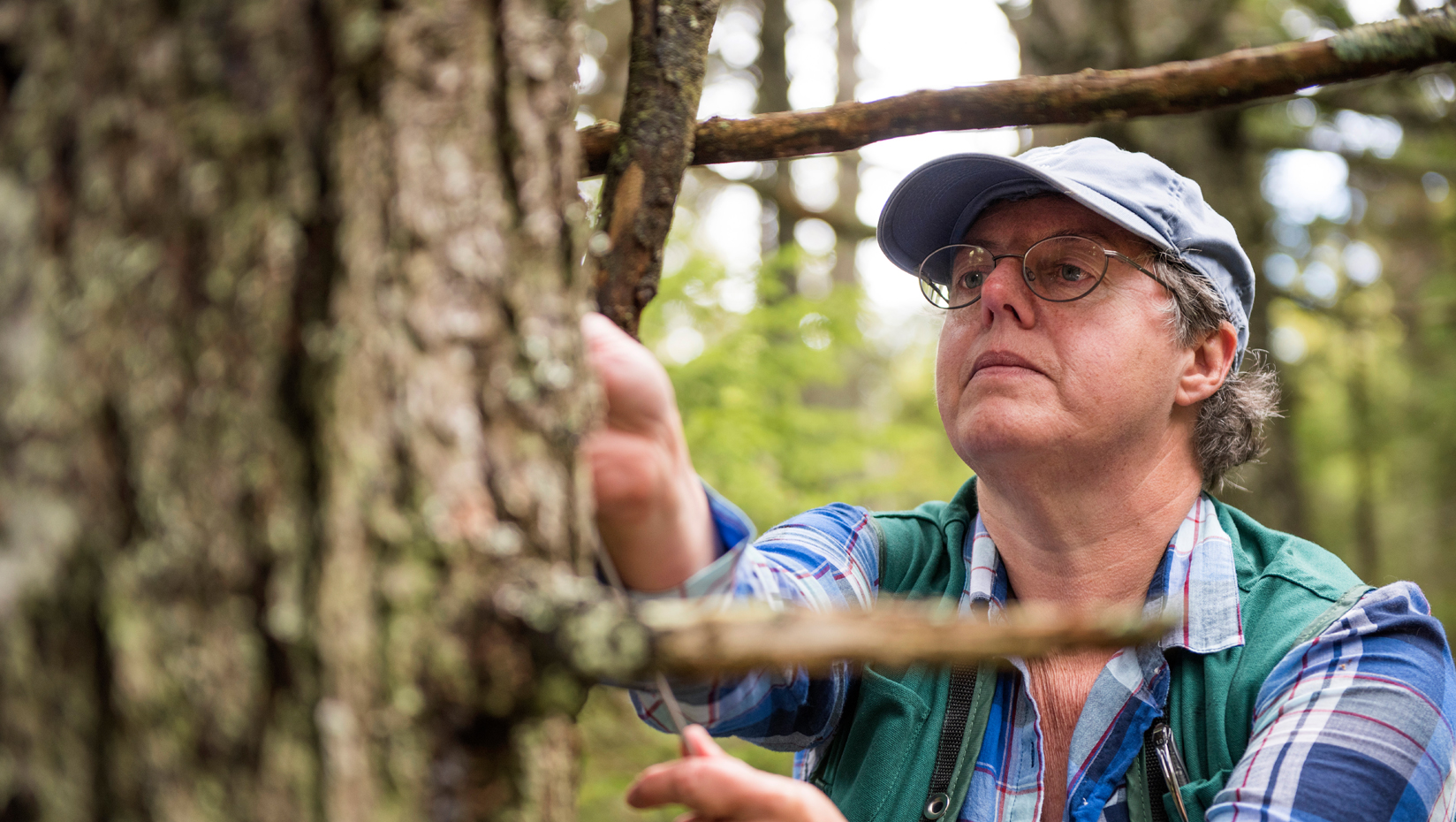
Pam Wells: Inquisitive landowner
Pam Wells of Old Town owns more than 1,000 acres of land and wants to know the best way to manage her forest. To do so, she enrolled as a student in the School of Forest Resources at the University of Maine.
Already a UMaine alumna, Wells holds a bachelor’s degree in anthropology/English that she earned in 1981 and a masters of social work in 1991. She is now considering going for a master’s in forestry.
Wells also has been a field instructor for the School of Social Work and has taught software engineering in the School of Computing and Information Science with her husband.
In 2013, she worked with Jessica Leahy, an associate professor of human dimensions of natural resources in the UMaine School of Forest Resources, to help small woodlot owners create a peer-to-peer network in Baldwin. The project aimed to find more efficient ways to serve Maine landowners by incorporating social work strategies — including effective communication and resource-linking skills — into forest management. Wells supervised two social work interns who were involved with the study.
Beyond academics and work on her forest, Wells also does website design, wildlife photography and helps her sister on her alpaca farm business. She also enjoys gardening and taking care of her pets and saltwater fish tank.
Describe the land you own:
Our 1,058 acres woodlot is about 10 miles from Old Town in Milford/Greenfield. It abuts the Stud Mill Road and is adjacent to Sunkhaze Meadows National Wildlife Refuge.
We allow hunting, fishing, hiking, etc., but our goal is to create a demonstration forest for other woodlot owners and a place for students to conduct wildlife and forestry research. A long-term goal is to have our woodlot provide habitat for wildlife, increase forest productivity, and at some point obtain income from a sustainable harvest.
Our property has been harvested extensively for decades. It resembles much of Maine’s forests. We purchased it after its last harvest 10 years ago. It has grown a lot since then. Precommercial thinning was performed last year with assistance from NRCS [the Natural Resources Conservation Service]. Several years ago, a crop tree release was performed in a six-acre stand. This year, we have created a “stream team” which consists of both state and federal fish biologists. Our goal will be to restore our portion of the Sunkhaze Stream in order to provide better habitat for trout and salmon.
I am also exploring the remains of an 1800s shingle mill. While the most noticeable feature is a large rock wall, there is also a lot of logs and shingles buried in the banks of the stream itself. It provides a wonderful demonstration of how the logging industry altered the Maine landscape.
Why did you decide to pursue this degree? Why now?
I grew up a poor kid in Bangor, Maine. My dad left our family when I was very young and my home life was somewhat challenging. I brought up both my mom and my sister. For me, the forest was safety. I found it both exciting and peaceful. It still is. I also believe it is one path to a better climate for Earth.
I very much wanted to be a forester in the ’70s. Women were not encouraged to be foresters in the ’70s.
After graduating in the ’80s, I worked in retail management for 10-plus years, then became a licensed clinical social worker in children’s mental health. I managed group homes, foster care programs, family therapy programs, case management programs and corrections programs for about 20 years.
Finally, I decided to return to my passion — the forest. It has been a long journey.
Why UMaine?
It is close, and I know it well. It is also known as a good school for forestry.
Have you worked closely with a professor or mentor who is making your UMaine experience better?
I would say Shawn Fraver is an amazing professor. He is a great teacher; passionate about his field and willing to have discussions with students. He has managed to put up with my incessant questions even after I finished his class.
What difference has UMaine made in your life and in helping you reach your goals?
UMaine has helped me be who I am in many ways. I would never have done my journey without it. Currently, I am learning so much about my forest because of the classes I attend. I would not be able to have the important conversations with my forester and loggers without that education.
What are the benefits and challenges of being a nontraditional undergraduate? Would you recommend going back to school for those who are considering it later in life?
I do encourage older people to go back for a variety of reasons.
First, for knowledge; the world is changing quickly and there is no better place to learn about new possibilities than in a classroom. Second, to enjoy the energy of younger people who are on the cusp of their own journeys. Third, to contribute to the futures of young people. When you are older, you are more willing to ask questions and to share your point of view. That can be invaluable in a classroom discussion. The benefits are outstanding.
There are some challenges. In my instance, my last math course was in the early ’80s. I say, “What happened to the math in my head?” I think aliens took it. I also have some challenges with field trips. Young people appear to be able to run through the woods a lot faster than I can. Now when did that happen?
